Local footy: Do VAFA clubs hold advantage amid salary cap cuts?
As suburban football leagues prepare for a very different 2021 amid the coronavirus pandemic and significant salary cap cuts, club bosses open up on who might benefit most and address their concerns.
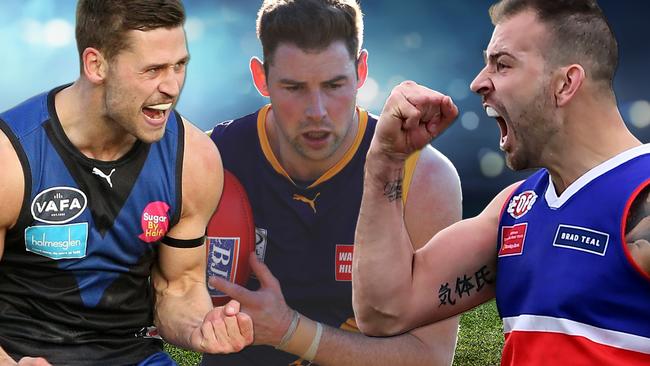
Local Footy
Don't miss out on the headlines from Local Footy. Followed categories will be added to My News.
Talk of local football clubs spending an eye-popping $500,000 on players yearly was common not long ago.
The player payments’ explosion forced AFL Victoria to intervene as a points system was implemented statewide followed by the salary cap.
But the state of play has changed significantly amid the coronavirus crisis.
Salary caps have been slashed by 50 per cent across Victoria for 2021, with clubs in top-flight competitions limited to $100,000.
The move is intended to allow them to regain their financial footing, survive and prosper once the uncertainty subsides.
But experienced officials at suburban clubs have been left with myriad questions.
They ponder if more players will be tempted to join the VFL – which has merged with the NEAFL – with state league clubs able to pay players $200,000.
The Victorian Amateur Football Association might also have been handed a free kick.
Those at clubs in rival leagues harbour no animosity towards VAFA clubs, with any perceived benefit viewed as an unintended consequence, but their ability to help players land jobs through a long list of connections is viewed a sizeable advantage.
Already guns Brett Eddy (Vermont to Caulfield Grammarians) and Liam Buxton (Vermont to St Kevin’s) have left the strong Eastern league for the VAFA – which bans payment to players – since the season was shutdown, and others are rumoured to follow.
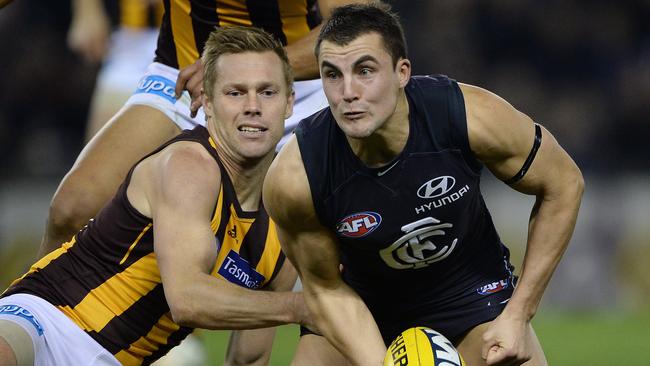
Former Carlton player Jaryd Cachia has linked up with St Kevin’s after he was set to play for Golden Square in 2020, but ex-Saint David Armitage has exited Collegians to join Bonbeach.
Good players have come to the Essendon District league, too, with Andrew Browne returning to Keilor and Chris Stewart signing with East Keilor.
But University Blues president Tim Rourke declared “the Ammos could be a stronger comp than ever” next season.
“There’s not going to be the money around for those suburban clubs, which is good and bad,” Rourke said.
“It’s good because people will be playing because they want to play and there’ll be a bit more loyalty, but the guys chasing $50 or $60,000 straight out of AFL will be much more focused on employment I think.”
He said amateur clubs focused far beyond football to ensure “players finish their career with us but have more than they started with”.
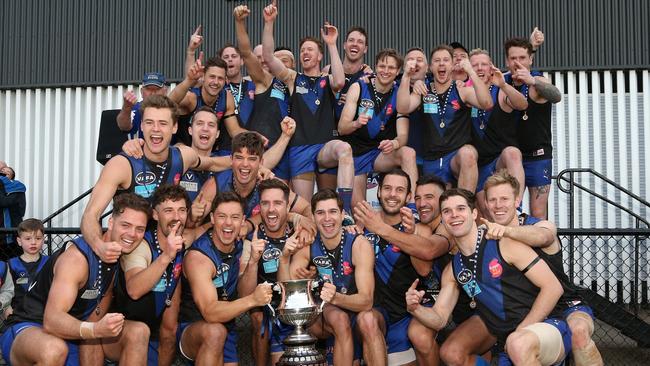
The Blues claimed the Premier flag in 2019 with a team featuring nine ex-AFL players.
Captain Ayce Cordy, Cameron O’Shea, Luke Russell, Ross Young, Tom Young, Kieran Harper and Piers Flanagan remain, while Jay Kennedy-Harris and Sam Grimley have since put pen to paper to bolster a formidable unit.
Rourke said the VAFA was well-positioned to be rated Melbourne’s pre-eminent league.
“We’re attracting really good young talent increasingly and I think that move away from cash to employment is really going to stand the VAFA in great stead,” he said.
“(VAFA chief executive) Brett Connell does a really good job. He’s come from the system, played a lot of footy and understands the proposition we’ve got, so he’s very supportive.
“The points system works well – I think it’s a good system.”
St Kevin’s president Michael Doble also believes the competition is set to become stronger.
His club already boasts one of the most lethal forward lines in local football, with ex-AFL trio Jarrad Waite, Tom Boyd and Patrick Kerr roaming the forward 50m arc.
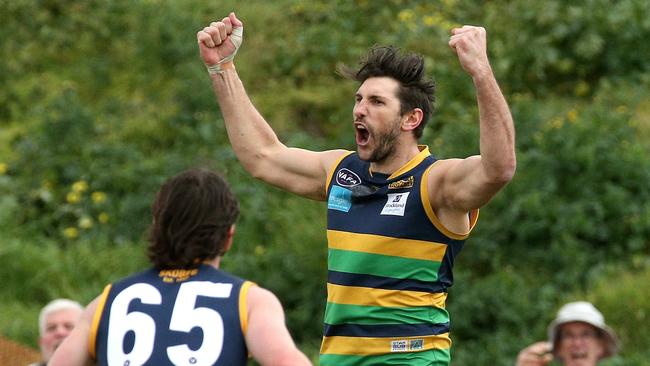
“I’m sure the lack of payment in some of those leagues is going to detract from the attraction for a few players. It will be hopefully be good for players to get some better pastoral care in the amateur environment,” Doble said.
“The key aspect for me is the pastoral care that we and many other amateur clubs have in place. We really look after the kids, whether it’s their mental health, connections, education, motivation. There’s a whole range of things.
“That doesn’t change, and probably enhances into next year.
“Do things change dramatically? Well, probably not and maybe just a little bit, and there might be a few more players around.”
He pointed to the fact the players secure employment – not their clubs whose sole job is establishing the connection.
All players are welcome to join the VAFA if they are not receiving money to take the field, and there is a strict integrity process with high-profile talent grilled by a permit committee.
Doble hit out at the repeated criticism from people affiliated with rival leagues.
“This is one of the great furphies of all time when you hear some of these presidents from other leagues and some of our competitors even sometimes bleating about, ‘They must be paying’ or ‘They must be doing something.’ They don’t realise we have to sign stat decs and the players have to sign stat decs,” he said.
“The integrity is definitely there in the amateurs, there can be no doubt about that.
“Some small-minded people think the attraction of $300 or $400 a week is a great inducement, whereas plenty of players look at it clearly and think they’d rather forego that $300 or $400 a week and go to a club that’s really going to look after them – for a lifetime in fact.”
A flood of former AFL players signed with VAFA clubs after the 2019 campaign.
It is yet to be seen if the influx will continue, but suburban football great Bernie Dinneen said the high standard of the VAFA also attracted players.
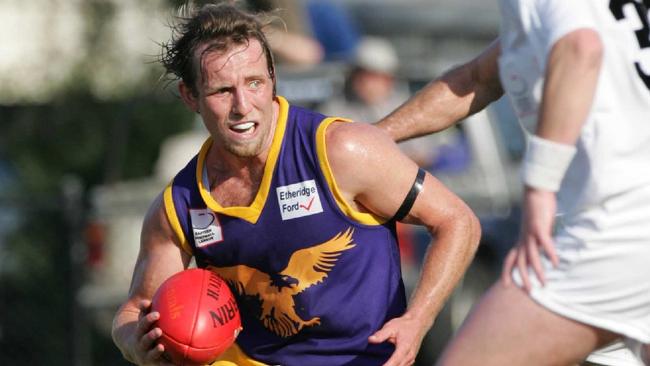
Old Trinity Grammarians coach Dinneen said all competitions could benefit, with list cuts looming at VFL and AFL level.
It has been proposed that stand-alone VFL clubs will be limited to 20 players over 23, while aligned or AFL stand-alone clubs will only be allowed five players over 23.
While there is a salary cap discrepancy between local leagues and the state league, there is also set to be less opportunities available at higher levels.
“I don’t think it’s (the reduced salary cap) going to necessarily have that big of an impact,” Dinneen said.
“I think the bigger impact is going to be what happens with the VFL and TAC (NAB League) … I think the comps are really comparable, but I think the perception is that amateur football lends itself better to your VFL/AFL type of football, and that’s probably shown a little bit in recruiting in the last 10 years that more guys have probably been given opportunities through amateur football.
“So I think the VFL thing is going to be the big impact – are there players out there who are used to earning the dollar and don’t maybe have those affiliations with amateur clubs. Then, particularly if there are work opportunities, there might be a bit of a flooding of the market across the board.
“Overall we might find a lot of the local comps – Essendon, Eastern, Northern, VAFA, et cetera – might be really strong next year.”
The six-time league best-and-fairest winner (Dinneen won three competition awards at Marcellin, two at Vermont and one at Bayswater) said the financial impact of the pandemic would hurt all clubs.
“Getting in sponsors and cash into footy clubs, including at the amateur level to make them run, is going to be really hard.
“People think, ‘A whole heap of people are just going to play there (the VAFA)’. We’re looking at record unemployment … so having people have these jobs appear and guaranteeing someone coming in is going to be just as difficult to execute as it is to pay players.
“I actually think it’ll balance itself out more than a lot of people think. Just like it’s going to be hard for Eastern footy league, Northern, Essendon to generate money through sponsorship in the tough financial economy that we’re going to be in, it’s going to be hard for amateur clubs to try to create jobs and roles and things like that.”
Dinneen said he supported the points system but acknowledged the salary cap was difficult to enforce at local level.
Clubs will be relying on their homegrown players more than ever next season and in coming years given their ability to recruit heavily is likely to be restricted.
Dinneen said Old Trinity players would “be lucky to land two or three” jobs a year despite external perceptions.
The reduction has demanded community clubs to get creative to lure recruits and ensure they don’t fall behind.
A football administrator at a metropolitan club said he was worried the salary cap cuts had gone too far.
He said clubs were eagerly awaiting how the VFL-NEAFL merger would look.
“There’s going to be guys who filter back from the VFL into our league. What are they worth with a reduced salary cap and what does that make our loyal serving players worth?” he said.
“I reckon all clubs have the priority of signing their own and then looking at what’s left. I can tell you, there’s not a lot left.
“A couple of the other recruiting guys I talk to, we’re all the same. We’re just making offers to players and hoping it all adds up when we put it on paper.
“I reckon it does play into the VAFA’s hands a bit where they’ve got great opportunity to work and stuff like that.”
The experienced committeeman said “there’s a general rule that they tend to go towards the VAFA first. That’s without a doubt.”
The profile of a club’s elite players is also a vital factor.
If they are homegrowns, they could be a good chance to stay put, but it might prove a tough sell to remain loyal for less money if they travel long distances to play for a club they had no prior connection with.
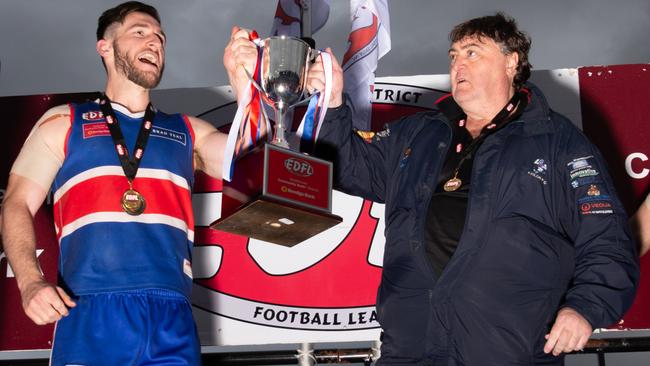
Keilor president Craig Hill said he was hopeful loyalty would increase given all leagues were operating under the same limits.
“If all clubs in the EDFL are doing the right thing, then it’s really difficult to go and offer a player $500 or $600 more to get them away from another club because that has a significant impact on your salary cap position,” Hill said.
“There might be (an extra) $100 or $200 elsewhere, but is that enough to warrant leaving a club that you’re comfortable at or may have had some success with?
“I think it certainly will create that stability. If the clubs look after the players, you’d like to think football now could become more loyalty-based. It is already to be honest. There’s not a lot of players out there that go and sell themselves around currently or previously, but I think it’s even harder now.
“If you don’t look after your players, you risk losing them; if you look after them, then they’re likely to stay because this financial market is probably going to be with us for a few years you would think.”
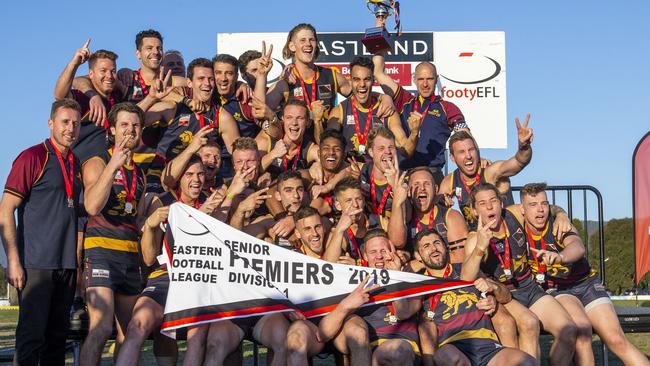
Doncaster East club boss Peter Sowersby said culture was more important than ever as players adjust to the reality of earning less.
“I think the most important thing here is the club you’ve created,” he said.
“The clubs that have got guys coming in for two to three years, or just in for a year to earn really good money and then leave … we’re lucky that we’ve had a bit of success and everyone plays for the jumper rather than the actual money itself.”
St Albans champion Tim Jenkins, who has claimed the Western Region league’s highest individual honour twice, said he expected the salary cap cuts to limit player movement and “level local footy out to where it needs to be”.
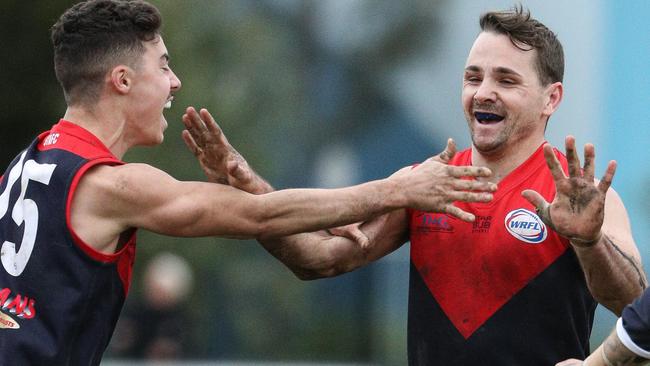
“The money’s great and it’s brought a lot of good players to local footy, but I think the reduction … should bring it back to community footy,” Jenkins said.
“When I was first at (VFL club) Williamstown and coming back to St Albans, you weren’t getting much money at all. It was less money than the VFL and it almost got flipped on its head a little bit, where you could earn much more money playing local footy than you could VFL.
“That scenario might turn back to what it was, which I think gives players the incentive if they want to really pursue their footy and take the next step, then they can do it.”
VAFA chief Connell denied his competition had scored an advantage and said “there is a great choice for players” across the metropolitan football ranks.
The salary cap cuts could be in place for the next three seasons.
MORE LEADER LOCAL FOOTY NEWS
BULLANTS BACK AS VFL STAND-ALONE SIDE
FORMER AFL COACH TO LEAD NORTH BALLARAT
